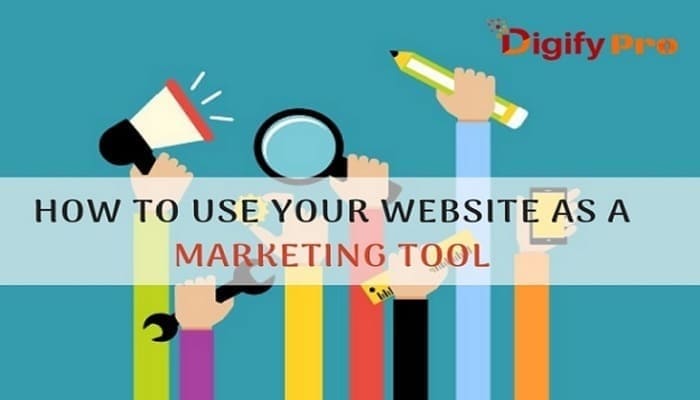Your website is the most important tool you have for marketing your business, services or items. Your company’s website provides such a practical solution. With the tight budgets and limited resources in today’s business environment, organizations are forced to closely evaluate spending, especially when it comes to marketing. A website, however, is a tool that all businesses can leverage to help increase brand exposure, expand their target market and help grow their business.
- Make Attractive Your Website: Websites are important for every business. In today’s digital age, having accessible online information is crucial for success. Just having a website isn’t enough, though. What matters is what’s on your website. You might have heard “First impression is last impression!” This is also applicable for a website. If a visitor visits your website and if they don’t find it attractive, then there is a chance that visitor may bounce from your site. Your website must be attractive and professional so visitor likes to surf your site.
- Use SEO for Rank in Search Engines: To start, you should perform keyword research based on your marketing goals. Use strong long-tail keywords (these are more specific/niche terms that those who are poised to buy will be searching for) and search engine optimization (SEO) to get your website to rank high in search engines and receive more website traffic. When people are searching for what you do, you want your site to be the first one they see.
- Listing Your Website for Visibility: So you want to get your website on page 1 of Google, but you’re not sure how? Well, you’ve come to the right place! I’ve ranked dozens of websites on page 1 of Google, and I’m going to show you how you can do the same. The first thing you should realize about Google is that Google is not the Internet. Just because your website does not show up on Google, does not mean it is not on the Internet. Your website can be published live on the Internet without being displayed in Google’s search results for a particular keyword. Google uses this collected data to determine which web pages to show, and in what order, for a particular keyword search.
- Use Clear Navigation: Easy and clear navigation does not mean listing everything. Nor does it mean having too few items, which cause users to scan through long, exhaustive content pages. Provide a great user-experience by finding a balance between the two. Navigation must be in service of your website’s content. Visitors should be able to quickly scan the navigation and make a decision on where to find content they are looking for.
- Update Your Content: Keeping the content up to date on your site helps build trust between you and your customers. Most likely, customers rely on your site for useful information on whatever market you are in. It’s important to keep the keywords on your website fresh as well as the content. Another place to update your website is your keywords. Having pages on your website that speak about a specific topic is only useful if the keyword(s) are mentioned.
- Add a Blog on Your Site & Post Consistently- Most websites do have a blog, but often it is an area that is severely underutilized. Each blog post should offer information and education that your potential customers actually want. Explain how you can solve your visitors’ problem. Focus on the outcome and the transformation. Doing so will make it more likely that people will think of you when they are ready to buy. A well-designed blog facilitates SEO best practices.
- Keep Branding Consistent- As your primary marketing tool, your website is the face of your organization. Put your logo in your site’s header so it is visible on every web page, not just your homepage. This helps build familiarity with your brand. Most successful websites also have a unifying color scheme and a theme in the imagery they use in their inbound marketing. Extend this look and feel to your social sites and emails and add other advertising and collateral materials to your site to further reinforce your brand.
- Make it Easy to Find You on Social Media- Your overall content marketing strategy needs to connect all places where you have a web presence back to your website. If you are a small business trying to make a name for yourself, then this is even more critical. Install buttons on your website to allow your website visitors to find you on Facebook, Twitter, Instagram, and any other social media platforms you use. Social share buttons allow you to get your own followers and likes directly from your website.
- Make it Mobile Friendly/Responsive Website: A responsive website includes all the same content and information on any device you access it on, but it changes the way it’s displayed and arranged based on the size of the device screen. This is the best option for making your website mobile friendly, because you’re not limiting the information your mobile visitors can access – they still get all the same content the rest of your visitors do. And responsive design is also good for SEO.
People everywhere use mobile devices to do everything from simple internet searches to purchasing big ticket items and much more. The reason? It’s fast and easy. Consumers in every industry want to connect and get what they’re looking for quickly. If you’re not optimized for mobile, you can’t offer your customers immediate service.



